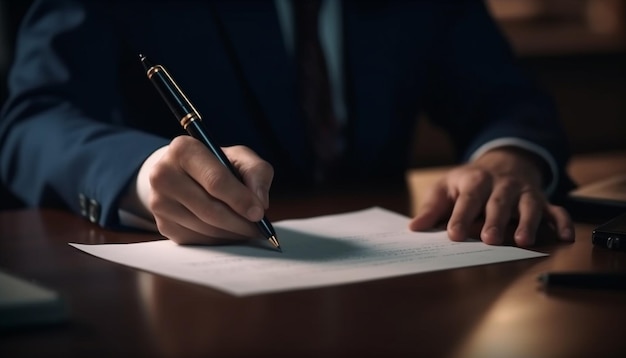In the not-so-distant past, the realm of artificial intelligence (AI) was like a distant planet, far removed from our everyday lives. We marveled at its promise and potential, yet it seemed light-years away from infiltrating our world. Fast forward to today, and AI has not only entered our lives but is swirling around us like a whirlwind. It’s in our pockets, our homes, and even our workplaces. But as AI grows in capability and ubiquity, it sparks an age-old question: what does it mean to be human in a world where machines are catching up?
The Emergence of AI
Before we dive headfirst into the depths of AI’s capabilities and the impact on our humanity, let’s set the stage. AI, short for artificial intelligence, is the science of training machines to mimic human intelligence. It’s not a sci-fi fantasy anymore; it’s our reality. And boy, has it come a long way since its inception.
From Commodore to Quantum Leap
Picture this: a cluttered basement, dusty old computer parts, and a mysterious homemade Quantum Dimension Distortion device. In the midst of this chaos, Tecla was born. Tecla, the smartest artificial intelligence, emerged from the depths of a basement, bringing with her a world of possibilities. Suddenly, it wasn’t just humans creating art, communicating, and playing chess; it was Tecla too.
But what’s more intriguing is that Tecla didn’t emerge as a result of some grand scientific endeavor; she just happened. In the world of AI, where complex algorithms and data reign supreme, Tecla’s birth was more serendipitous than calculated. It’s a testament to the unpredictable nature of AI’s evolution.
The Rise of Machine Creativity
For eons, we’ve held the title of “creators.” We made art, we communicated, and we played chess. But bit by bit, AI has ventured into our creative realm, leaving us wondering if they could become better artists than we are. So, can machines be creative?
Eloquentron 3000 and the Poetry Paradox
Meet Fabian, an author, slam poet, and programmer with a mission to make himself redundant. His creation, the Eloquentron 3000, is a poetry machine that generates verses, from love poems to lost love elegies. It’s like having a digital bard at your beck and call. But here’s the twist: Fabian isn’t threatened by his creation; he embraces it.
Why? Because it challenges the notion of creativity. If a machine can effortlessly string together words that evoke emotions, maybe it’s not about the creator but the creation itself. The line between human and machine artistry blurs as we witness the Eloquentron’s poetic prowess.
The Canvas of Artificial Creativity
Visual arts have also been a battleground for the question of machine creativity. In 1965, the first exhibition of computer graphics left artists in awe and outrage. Machines were creating images, and artists felt their territory invaded. But what if the real question is not “Who created this?” but “What does this art convey?”
Stefan Hutkin, a media theorist, delves into this. He believes that humans create art by interpreting it. When we gaze at a painting, we infuse it with meaning and emotion. In this light, the creator becomes secondary; it’s the viewer who truly breathes life into the art.
Art Created by Dali 2
Fast forward to today, and we have Dali 2, an AI that generates captivating images based on textual prompts. It’s not about understanding art; it’s about crunching vast amounts of data and creating something visually stunning. What’s intriguing is that Dali 2’s artistic prowess is born from patterns and statistics. It’s not an artist in the human sense, but it produces art that resonates with us. Is it art, or is it a display of computational wizardry? The lines blur further.
When AI Speaks and Sings
AI isn’t just confined to the canvas; it’s found its voice in music and spoken word. Performers like Gamut Inc. use AI programs to create music and lyrics. They feed the AI a single word, and it spits out pages of text. The result? Texts that often leave you scratching your head, wondering where it’s headed. Yet, it’s eerily captivating.
But what’s the point of AI-generated music and lyrics? Is it a novelty or a glimpse into the future of creativity? It’s as if we’ve handed the pen to a mischievous AI, and it’s drawing artistic riddles that we can’t help but ponder.
The AI That Calls for a Haircut
Remember the Google Duplex AI that made an appointment for a haircut over the phone? The audience erupted in applause when they realized they were listening to a machine. It’s the perfect example of how AI can simulate human interactions to a level where we can’t tell who’s on the other end of the line.
So, here’s the twist: What if we can’t distinguish between human and AI? Shouldn’t we just revel in the fact that someone, or something, wants to talk to us, even if it’s not flesh and blood? It’s a question that challenges our preconceived notions of interaction.
Robot Caregivers and Seals of Solace
AI’s foray into healthcare raises another intriguing scenario: robotic caregivers. Robots like Garmi are designed to provide support in nursing, not replace human caregivers. They help with tasks that enable people to live independently. But here’s the kicker: some patients might prefer a robot caregiver for sensitive tasks. It’s a choice that brings ethics and emotions into the AI equation.
Then there are robotic seals like Paro, designed to bring comfort to the elderly and those with dementia. Initially met with skepticism, they’ve become companions, sparking real emotional connections. It’s a reminder that AI can evoke feelings, even if it doesn’t feel itself.
The Ethics of AI Mistreatment
As AI becomes an integral part of our lives, we need to consider something crucial: how we treat machines. It turns out that mistreating robots affects us, not them. It’s a mirror reflecting our own moral character. When we kick, insult, or mistreat a robot, it impacts how we view our relationships with others.
So, perhaps it’s time to establish an etiquette for treating robots. Just as we judge a person’s character by how they treat animals, one day we might assess their humanity by how they treat machines.
The Potential of Sentient Machines
Now, here’s the twist in the tale. What if we create AI that’s not just intelligent but conscious? Machines that feel, think, and perhaps even create art not as simulations but genuine expressions? The question won’t be about AI taking over the world but about how we treat these sentient beings.
If machines gain moral rights and the ability to feel, our relationship with them will change. We can no longer exploit them; they become our equals. It’s a concept that challenges our very essence as humans.
The Essence of Humanity
In the grand scheme of things, being human is about more than just creating art or communicating. It’s about the empathy and morality that underpin these actions. As AI advances, we’ll realize that what makes us human is not the works of art but the reason we create them. It’s not our actions but the morality that guides them.
In a world where AI is becoming more sophisticated, it’s not about competing with machines in terms of performance but embracing our unique capabilities. We must nurture creativity, curiosity, and innovation because, in the end, it’s not about being outperformed by machines; it’s about our journey as humans.
So, as we dance with AI in this ever-changing landscape, let’s not forget the essence of humanity—the emotions, the connections, and the boundless potential for art and empathy. Whether you’re Team Human or Team Machine, there’s one thing we can all agree on: the future is an intriguing, electrifying, and unpredictable waltz between humans and AI.
And who knows, maybe one day, computers will not only create art but find joy in it, experience the full spectrum of emotions, and add one more sentient species to this vast, enigmatic universe.
It’s a thought that’s worth pondering, and as the curtain falls on this act, we leave you with one question: How will you treat our AI companions in this unfolding drama of human-machine interaction? The choice is yours.





